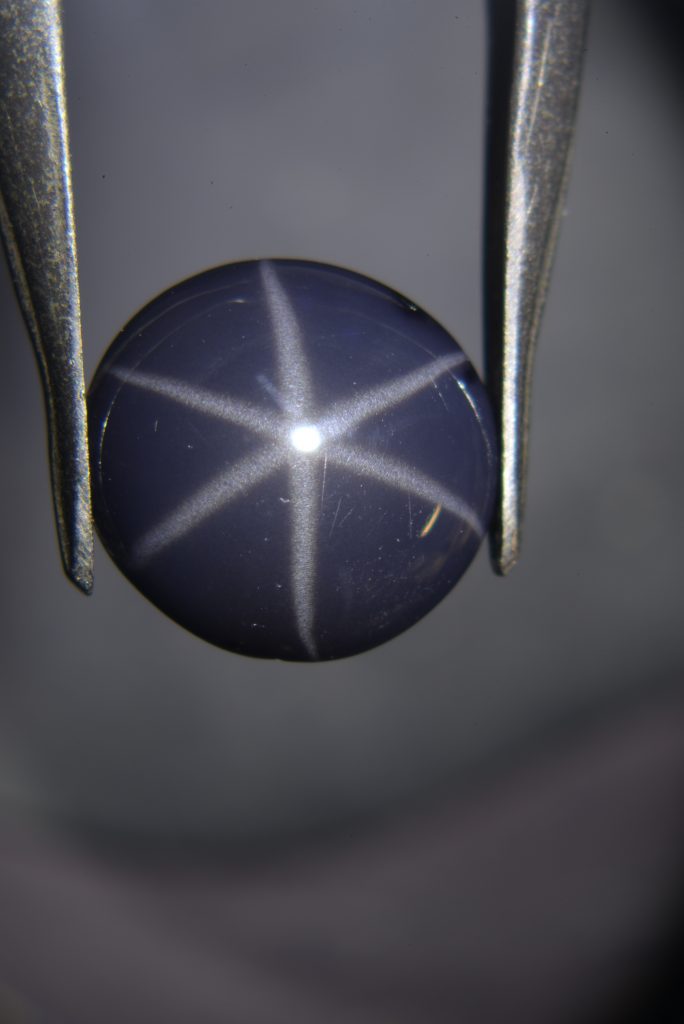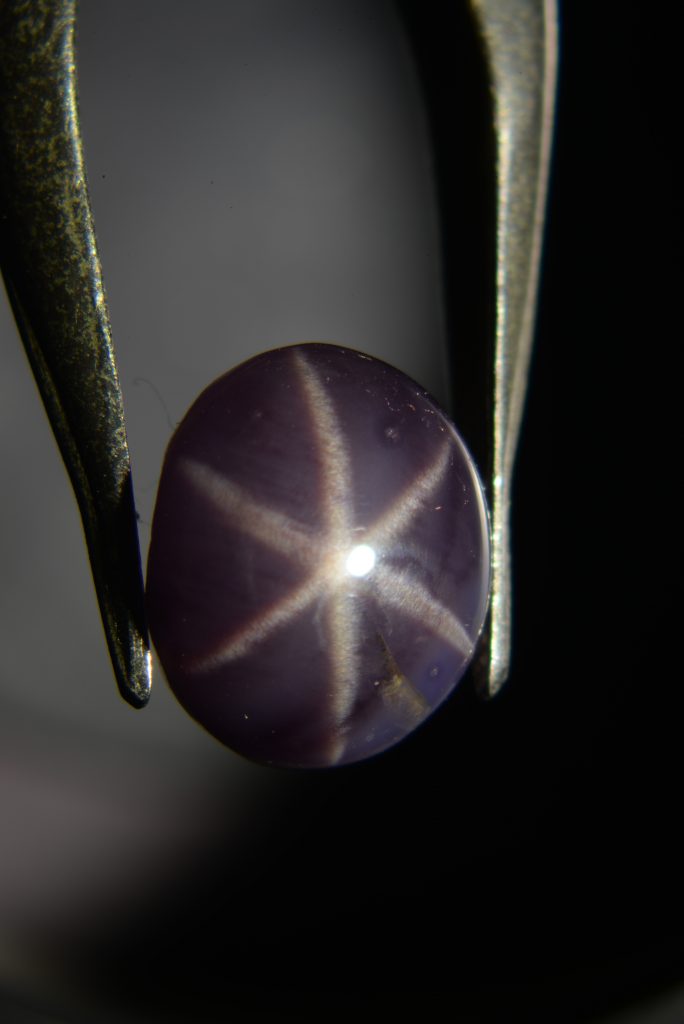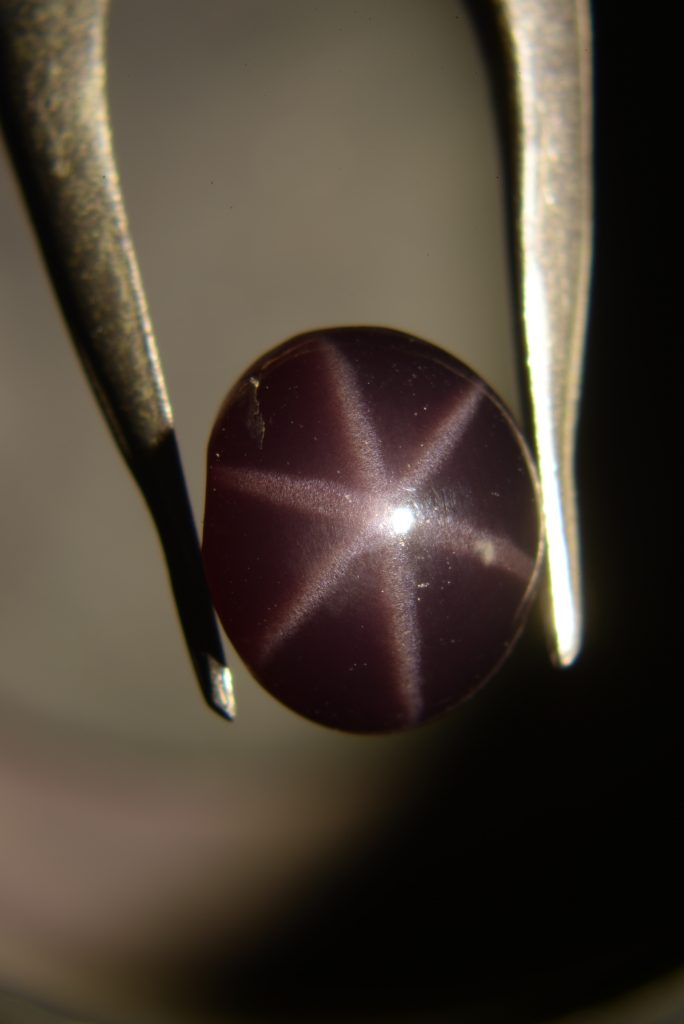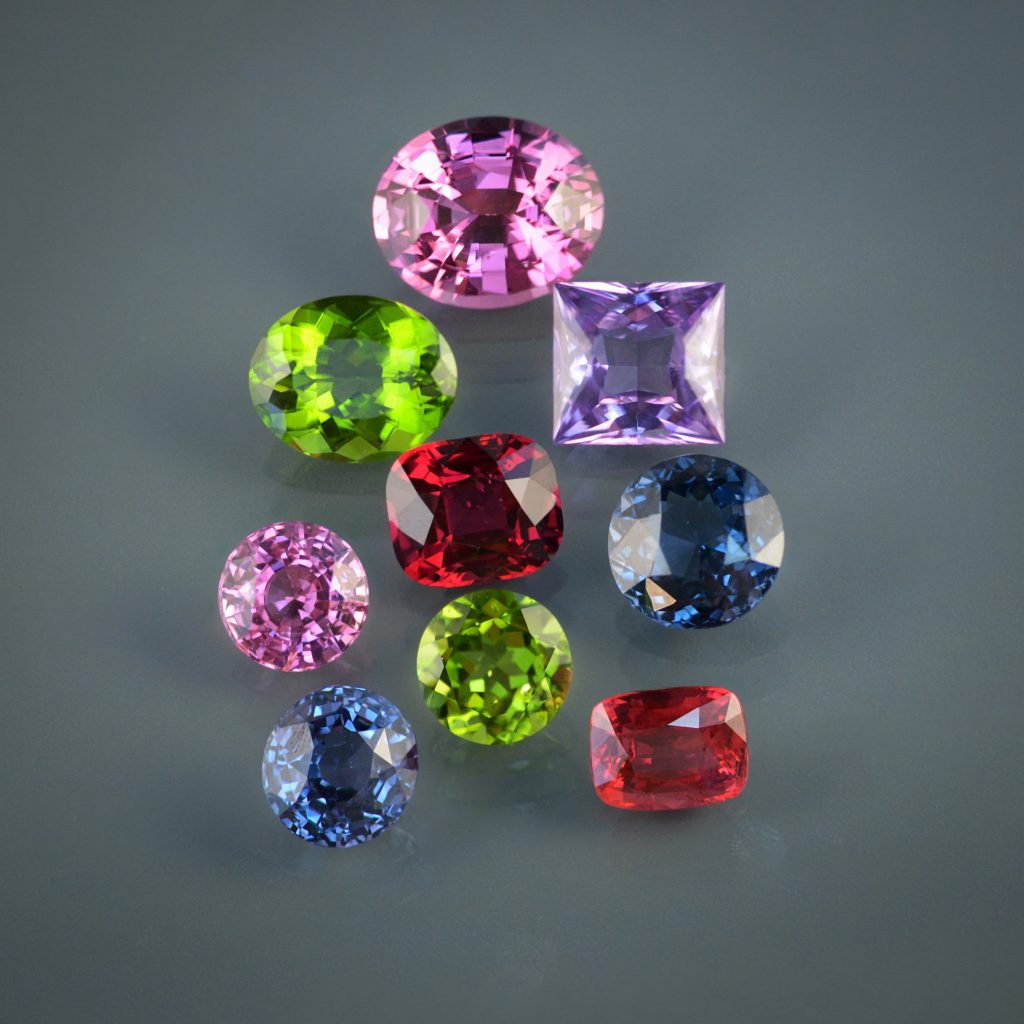
Celebrating August’s Birthstones
August’s birthstones, spinel and peridot, have both been famously misidentified throughout history. Many well-known and coveted rubies, like the Black Prince’s Ruby and the Timur Ruby, are now known to be spinel. It is likely that, without spinel, rubies would not have reached the popularity or prestige that they enjoy today. In the same way, many of the “emeralds” in Cleopatra’s collection, as well as “emeralds” decorating the shrine of the Three Kings in the Cologne Cathedral in Germany, are, in fact, peridot
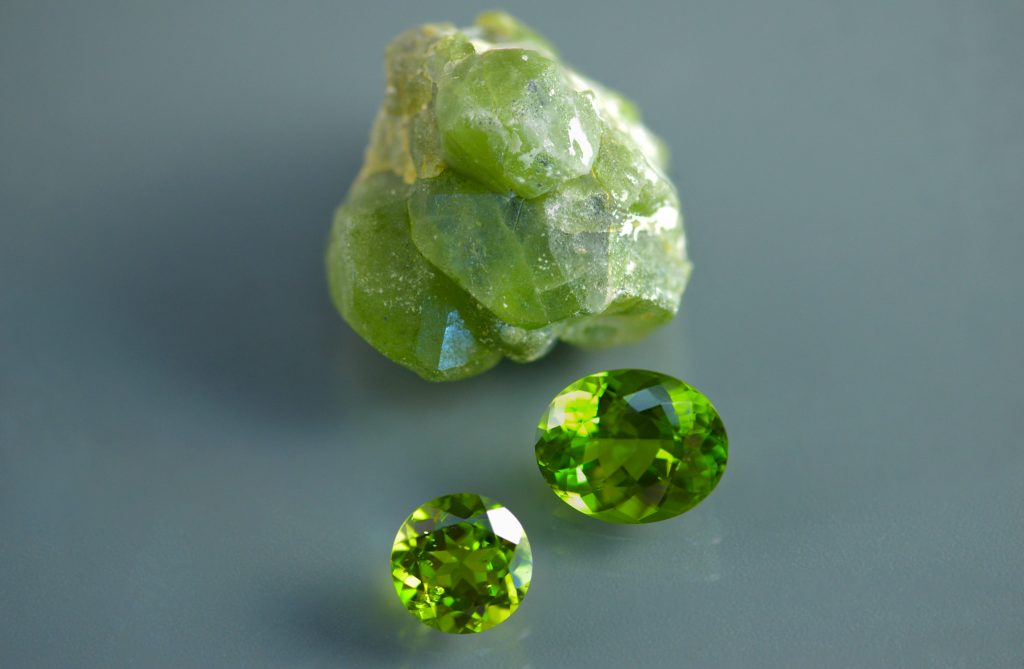
Peridot symbolizes strength, and was worn by the Egyptians to ward off evil. In ancient times, peridot was known as chrysolite, the “gem of the sun”, and in more recent years has been referred to as the “evening emerald” because it’s electric green color remains strong in dim lighting
Throughout history, the island of Topázios, now Zabargad, has been a primary source of peridot. The name topaz was originally applied to all yellow to greenish-yellow gems. Topaz and peridot are both members of the orthorhombic crystal system, adding to the early confusion. The name peridot likely stems from the Arabic word “faridat”, meaning gem
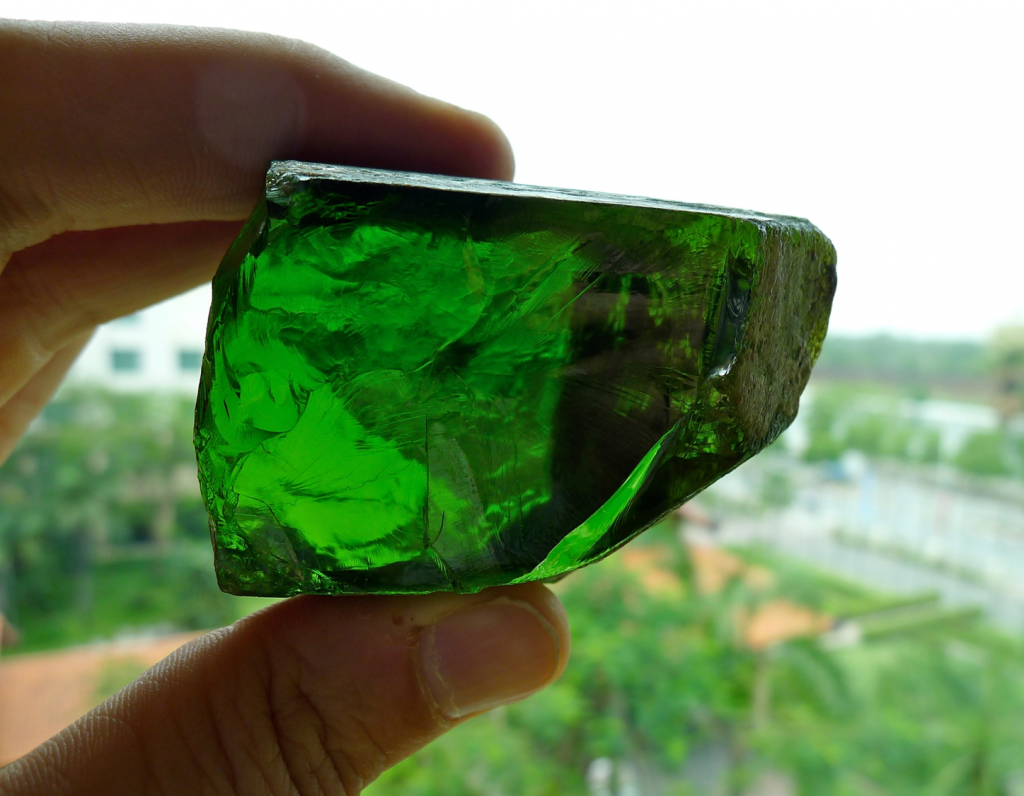
Photo courtesy of Federico Barlocher
Along with diamond, peridot is one of only two gems that can form in the Earth’s mantle rather than the crust. It is often transported
to the surface within volcanic basalts

Peridot is the magnesium-rich gemstone variety of the olivine group, and its color can be influenced by trace amounts of iron. It has been found on all continents, including Antarctica (in volcanic basalts, from Ross Island), and it is also occasionally found in meteorites (pallasite), although rarely gem-quality. The primary sources for gem-quality peridot are Burma, Pakistan, United States and China
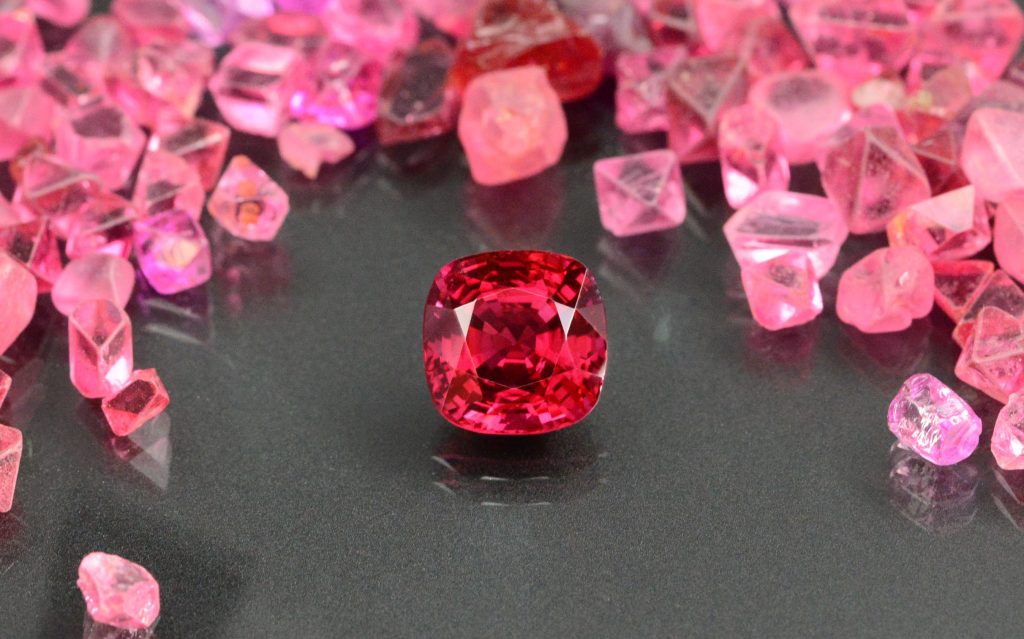
Spinel forms in octahedrons, and is a member of the cubic crystal system. The Latin word “spina”, meaning thorn, is likely to be the origin of the name spinel, referring to the shape of the crystals. In Burma, transparent and well-formed spinel octahedrons are referred to as Nat Thwe, meaning “angel cut”, because their nearly perfect shape and glassy surface hints that celestial beings must have played a part in their formation
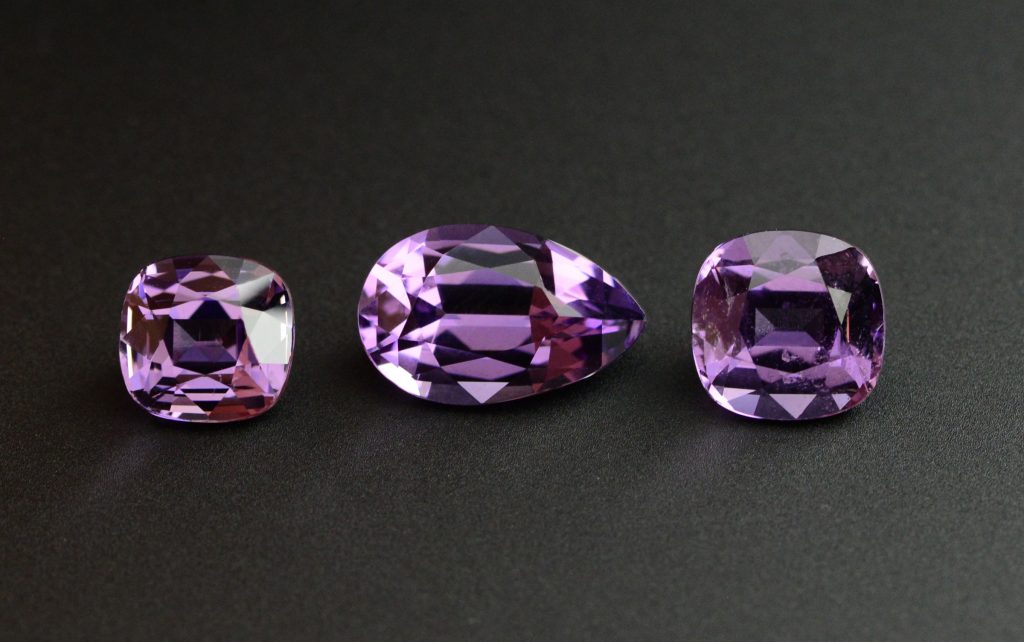
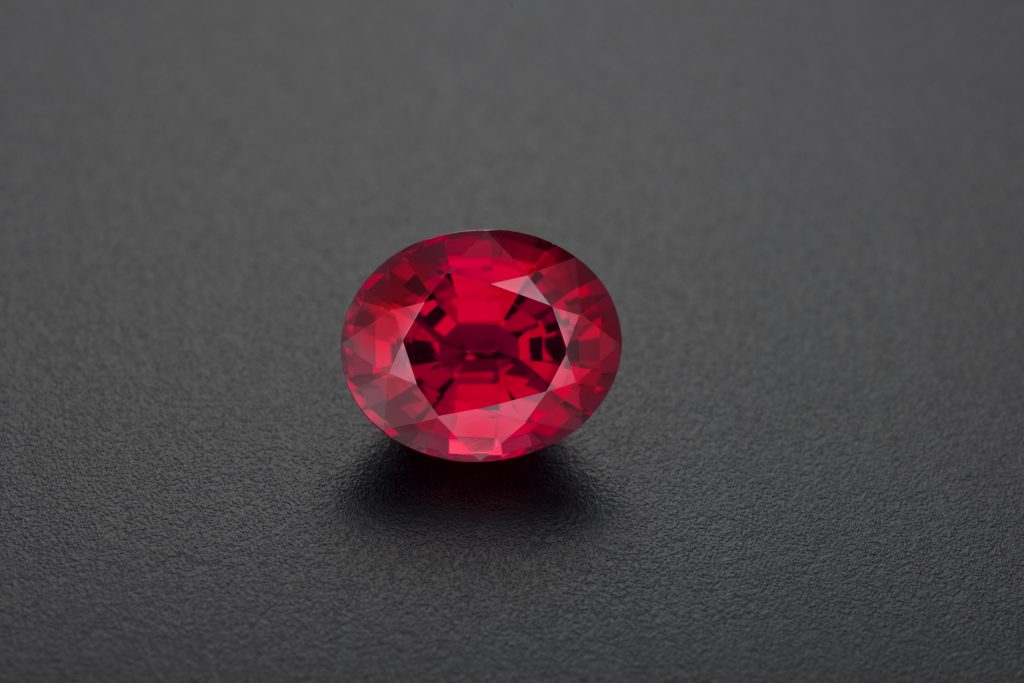
Spinel has been mistaken for corundum throughout history because it is found in similar colors and many of the same localities. Its lore is connected to that of ruby and other red gems, which symbolize passion, strength, nobility, loyalty and spiritual wisdom. In Marco Polo’s 13th century travel log, known as The Travels of Marco Polo, Marvels of the World, he refers to “Balas Rubies”, coming from the region of Badakhshan along the Silk Road, connecting China with the west. Today, we know that these ruby-red gems were actually spinels


Because of spinel’s cubic structure, 4-ray star spinels are much more common than 6-ray stars like those featured above
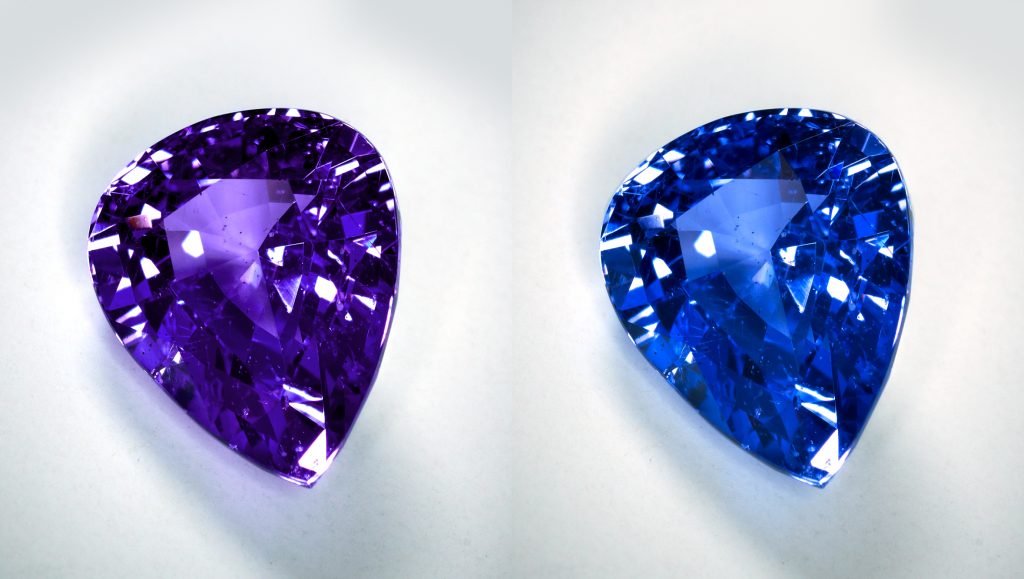
Color-change spinel is more rare than color-change sapphire, making it a highly sought-after gem amongst collectors and connoisseurs
